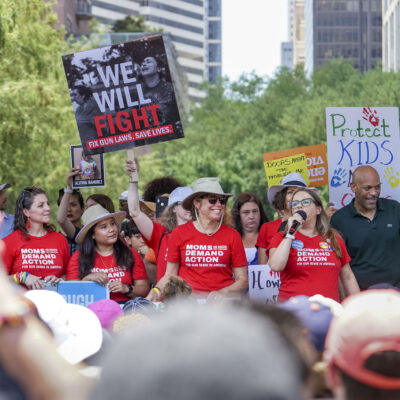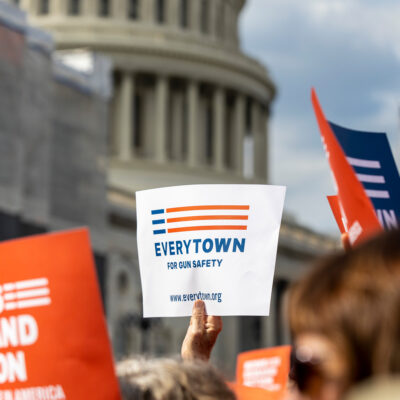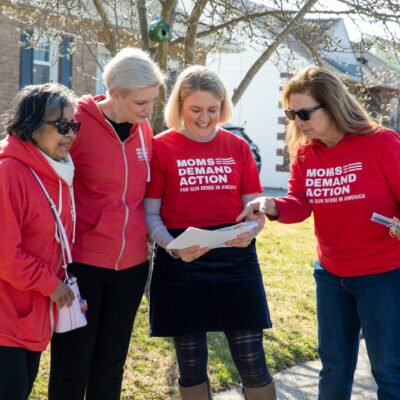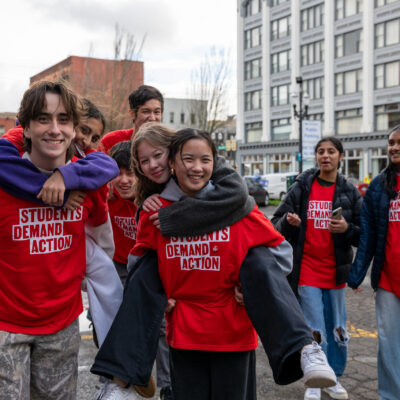Here’s What You Need to Know About the Proud Boys
9.30.2020
During last night’s presidential debate, President Donald Trump refused to condemn white supremacy. Instead, when asked directly “to condemn white supremacists and militia groups and to say that they need to stand down,” President Trump told the Proud Boys –– a far right Islamophobic and misogynist hate group –– to “stand back and stand by!” before adding, “But I’ll tell you what, somebody’s got to do something about antifa and the left.”
The Proud Boys and other extremist groups across the country rejoiced at President Trump’s implicit endorsement and decision not to condemn white supremacy:
- Members of the Proud Boys immediately began “sharing the group’s logo with the president’s words emblazoned like a slogan” after the President’s comments, and started selling a “Stand By” shirt.
- One Proud Boy leader commented that “Trump basically said to go fuck them up!” and how it makes him “so happy.”
- The national chairman of the Proud Boys wrote that he “will stand down sir!!!” He added that he is “so Proud of [his] guys right now.”
The Proud Boys, founded by noted racist, anti-Semite, and Islamophobe Gavin McInnes in 2016, are a group of violent, far-right extremists who often express racist beliefs.
- According to the Southern Poverty Law Center (SPLC), the Proud Boys are a designated hate group who “regularly spout white nationalist memes and maintain affiliations with known extremists. They are known for anti-Muslim and misogynistic rhetoric. Proud Boys have appeared alongside other hate groups at extremist gatherings like the ‘Unite the Right’ rally in Charlottesville.”
- The Anti-Defamation League (ADL) provides further context on the group: “The Proud Boys bear many of the hallmarks of a gang, and its members have taken part in multiple acts of brutal violence and intimidation.” Additionally, “[w]hile the Proud Boys insist that they only act in self-defense, several incidents — including one in which two members of the group were convicted of attempted gang assault, attempted assault and riot — belie their self-professed peaceful nature. Indeed, many members have criminal records for violent behavior and the organization actively pursues violence against their perceived enemies.”
President Trump’s attempt to lay blame on violence from “the left” is inaccurate and ignores the true threat of far right extremism in America. According to a recent study by the Center for Strategic and International Studies, “the most significant terror threat to the U.S. likely comes from white supremacists.” The report found that right-wing extremists were responsible for nearly two-thirds of terror attacks and plots in the U.S. last year, and for over 90 percent between January 1 and May 8, 2020.
President Trump’s own Department of Homeland Security had previously echoed this assessment, declaring in a September 2019 report that “White supremacist violent extremism, one type of racially- and ethnically-motivated violent extremism, is one of the most potent forces driving domestic terrorism.” Despite this fact, the Trump administration has reportedly “redirected resources from countering far-right, racism-fueled domestic terrorism” and continued to push the false narrative that the primary threat of violence comes to the left.
Guns are a key tool for far right violence. In a report on right-wing terror attacks between 1993 and 2017, the ADL concluded that “overwhelmingly, firearms and explosives were the most common weapons,” with more than a third of incidents involving “use or planned use of firearms.” Another ADL report found that in 2019, 86 percent of those killed by domestic extremists were killed by guns.
President Trump’s words have a history of inspiring violence. A few weeks ago, one of his supporters shot and killed two protestors in Kenosha and last year, the El Paso shooter’s white supremacist manifesto echoed President Trump’s anti-Latino racism. In all, a May 2020 investigation from ABC News found 54 cases invoking Trump in connection with violence, threats, and alleged assaults. Meanwhile, the SPLC reports that the number of hate groups in the U.S. has increased by 55% since 2017.
More information on the intersection of armed intimidation and extremism can be found here. To speak with a policy expert, please do not hesitate to reach out





